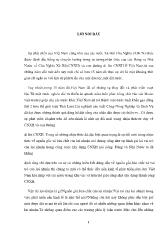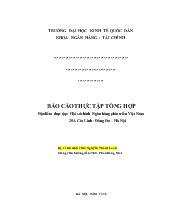Thesis Ownership concentration, corporate risk-taking, stock liquidity and firm performance
- Người chia sẻ : vtlong
- Số trang : 291 trang
- Lượt xem : 23
- Lượt tải : 500
Các file đính kèm theo tài liệu này
 thesis_ownership_concentration_corporate_risk_taking_stock_l.pdf
thesis_ownership_concentration_corporate_risk_taking_stock_l.pdf
- Tất cả luận văn được sưu tầm từ nhiều nguồn, chúng tôi không chịu trách nhiệm bản quyền nếu bạn sử dụng vào mục đích thương mại
Bạn đang xem trước 20 trang tài liệu Thesis Ownership concentration, corporate risk-taking, stock liquidity and firm performance, để xem tài liệu hoàn chỉnh bạn click vào nút DOWNLOAD LUẬN VĂN ở trên
2.2.4.2 Research gap regarding the relationship between ownerhsip concentration and firm performanceEmerging economies with unique characteristics of economic, financial, and institutional environments, including corporate ownership patterns, are regarded as an excellent ground for corporate governance research (Claessen and Yurtoglu, 2013). In these environments, especially emerging economies in transition, ownership concentration could be considered as an efficient corporate governance mechanism substituting for institutional shortfalls, such as weak legal protection of shareholder rights (Claessens and Djankov, 1999; Nguyen et al., 2015a). Potential changes in corporate governance efficiency could lead to different consequences of firms’ risk-taking orientation in investment decisions and thus different impacts on firm growth. As a result, a vast majority of recent studies on the concentration–risk-taking/performance relationship is contextualized in emerging markets (see Appendix A and Appendix B for a few of these studies). Nevertheless, most studies focus on either advanced emerging markets or secondary emerging markets. Research in frontier emerging markets is seriously scant. The consolidated approach used in this dissertation for Vietnam as a typical frontier market economy is a valuable additional piece to the incomplete picture of emerging markets.Among frontier market economies, Vietnam has concerns about corporate governance issues that reflect its weak institutional environment (Le and Walker,2008; Nguyen et al., 2015ab). The Vietnamese equity market has so far witnessed an increasingly high level of ownership concentration, albeit the ongoing divestiture of large state ownership16, raising the problem of minority investor protection. Indeed, according to the statistics for Vietnamese listed firms in Table 4.1, the average percentage of a firm’s equity stakes held by large investors (who own at least 5% of its outstanding shares) has increased from about 41-44% in 2008-2009 to nearly 55% in 2020, with an average of 49.5% over the period of 2008-2020. This concentration of direct controlling interest in Vietnam is comparable to that (around 50%) in the East Asian countries such as Hong Kong, Indonesia, and Malaysia (see Claessen and Yurtoglu, 2013).




